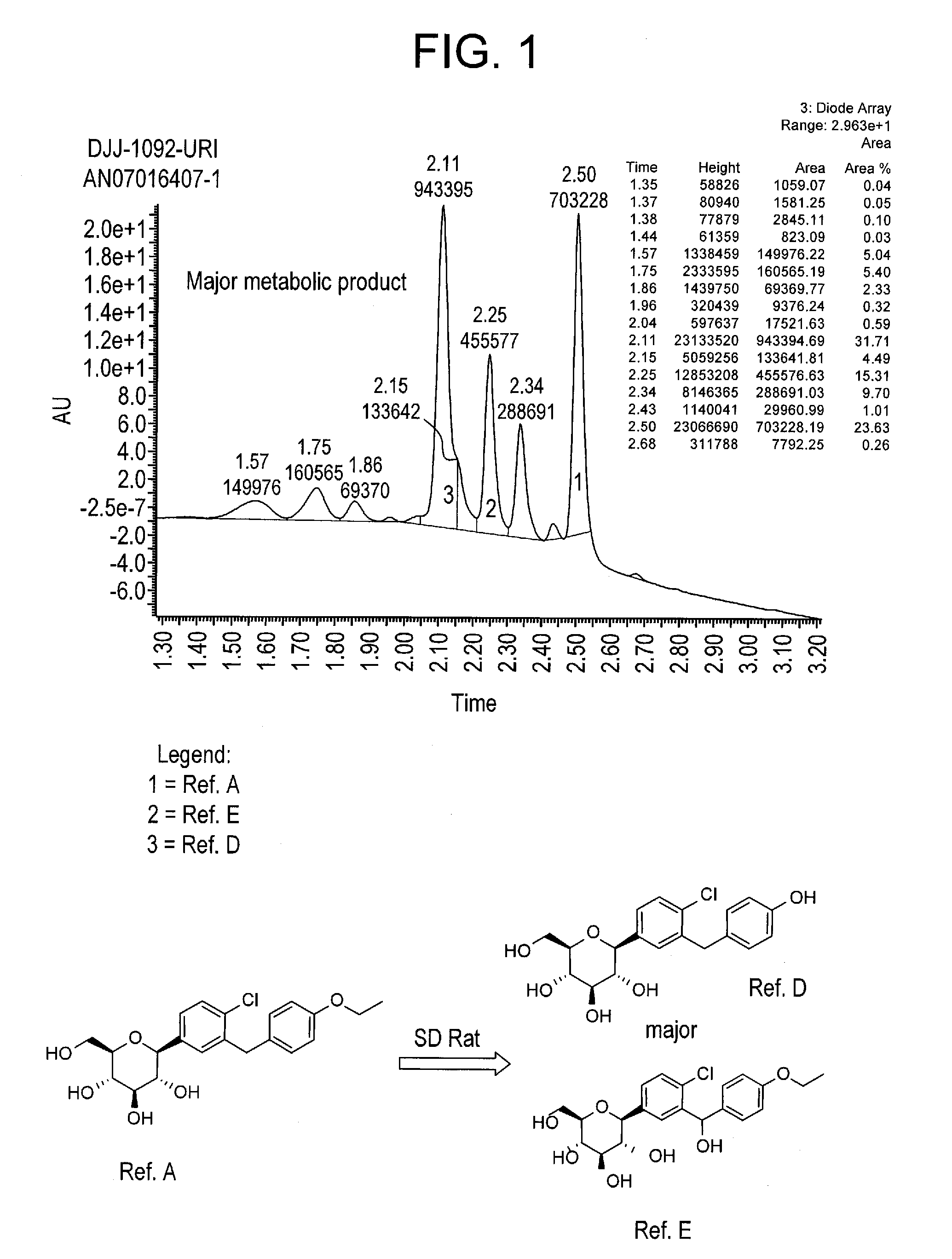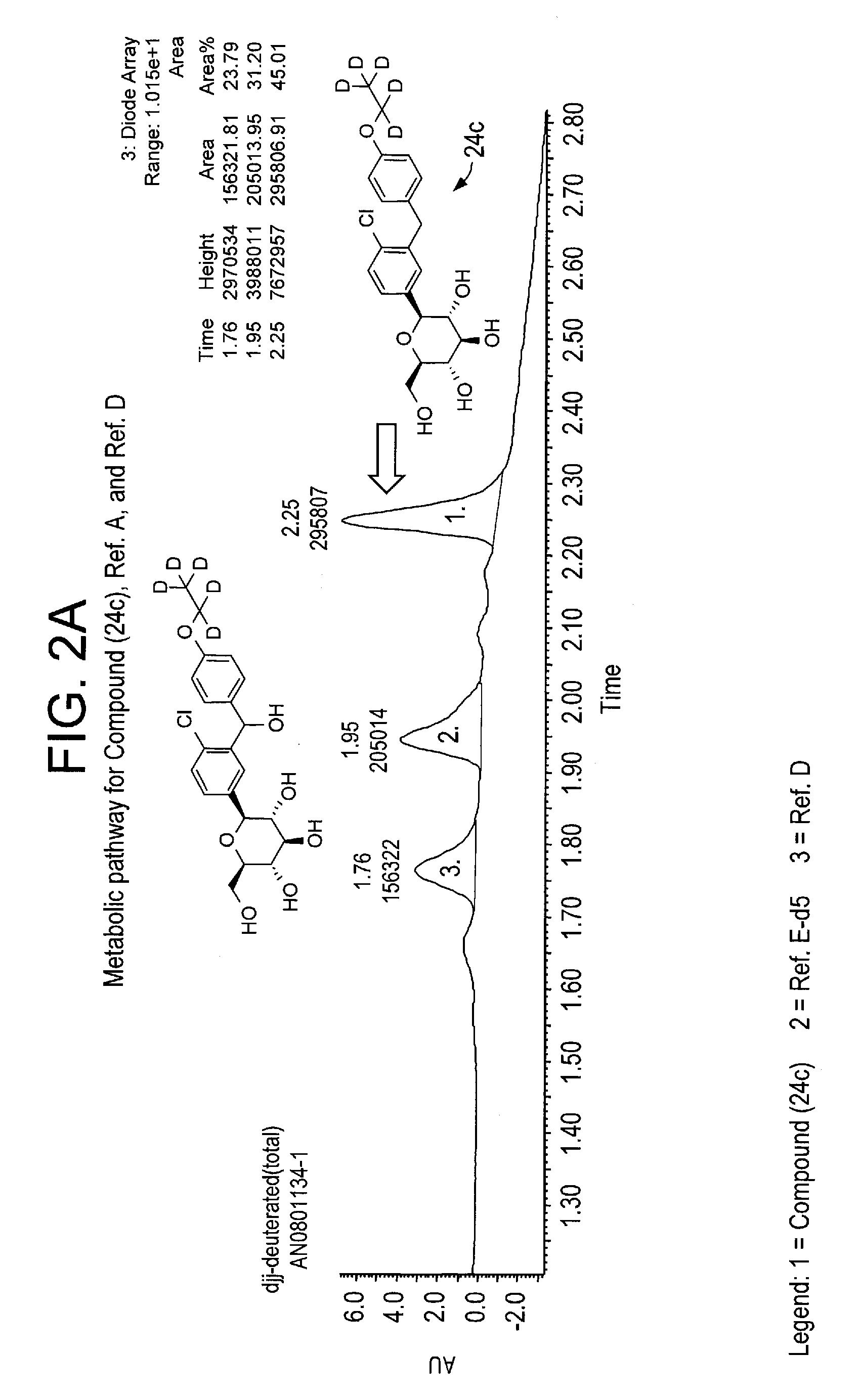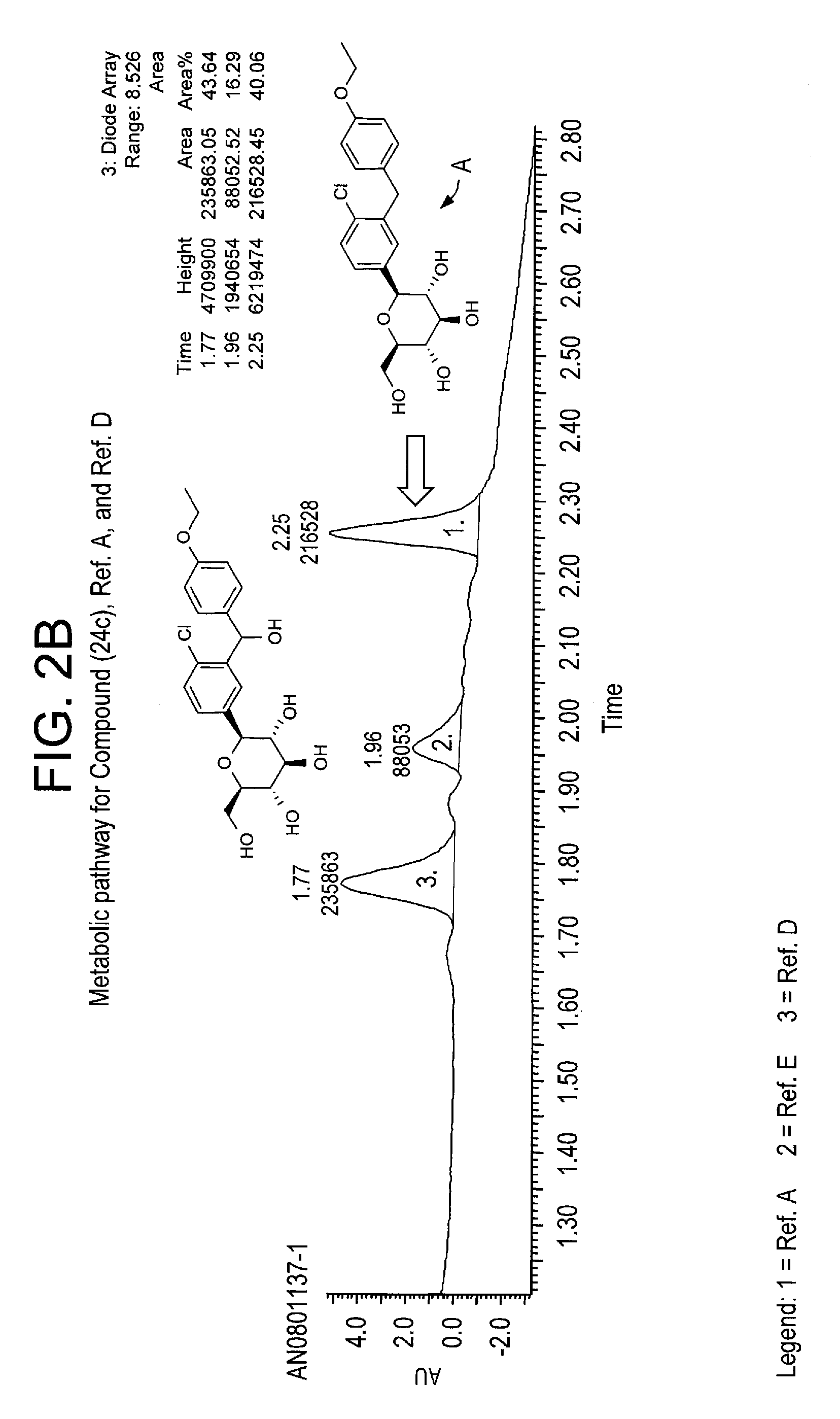Deuterated benzylbenzene derivatives and methods of use
a technology of deuterated benzene and derivatives, applied in the direction of drug compositions, metabolism disorders, extracellular fluid disorders, etc., can solve the problems of undesired side effects, insufficient glycemic control,
- Summary
- Abstract
- Description
- Claims
- Application Information
AI Technical Summary
Benefits of technology
Problems solved by technology
Method used
Image
Examples
example 1
[0319]This example illustrates the preparation of compound 5 according to the approach provided in Scheme 9. The general method is applicable to other compounds of the present invention.
Preparation of (5-bromo-2-chlorophenyl)(4-ethoxyphenyl)methanone (2)
[0320]
[0321]To 5-bromo-2-chlorobenzoic acid (1500 g, 6.41 mol) and oxalyl chloride (975 g, 7.69 mol) in DCM (2.8 L) was added DMF (9 mL). Once the vigorous evolution of gas ceased, the reaction was stirred for 10 hours at RT. The solution was concentrated under vacuum to give a yellow residue. The residue was dissolved in DCM (1.2 L), then the stirred mixture was cooled to −3° C., and phenetole (799 g, 6.54 mol) was added. After the addition was complete, aluminum (III) chloride (973 g, 6.54 mol) was added over 1 hour while maintaining the reaction temperature below 4° C. The mixture was poured over 10 kg ice and stirred at 4° C. for 1 hour. The suspension was diluted with water (3 L) and extracted with DCM (10 L×2). The combined org...
example 2
Preparation of (2S,3R,4R,5S,6R)-2-(4-chloro-3-(4-ethylbenzyl)phenyl)-6-(hydroxymethyl)tetrahydro-2H-pyran-2-d-3,4,5-triol (6)
[0328]
[0329]Compound 6 was prepared using methods analogous to those described in Example 1 above by using ethylbenzene instead of phenetole as starting material. 1H-NMR (CD3OD, 400 MHz): δ 7.36˜7.25 (m, 3H), 7.08 (s, 4H), 4.11˜3.99 (dd, J=20.4 and 12 Hz, 2H), 3.89˜3.84 (dd, J=11.7 and 1.8 Hz, 1H), 3.70˜3.65 (m, 1H), 3.45˜3.37 (m, 3H), 3.27 (m, 1H), 2.65˜2.55 (q, J=15 and 7.5 Hz, 2H), 1.21˜1.16 (t, J=7.5 Hz, 3H); MS ESI (m / z): 394 [M+H]+, calc. 393.
example 3
[0330]This example illustrates the preparation of compound 9 according to the approach provided in Scheme 10. The general method is applicable to other compounds of the present invention.
Preparation of 4-bromo-1-chloro-2-((4-ethoxyphenyl)methyl-d2)benzene (7)
[0331]
[0332]To a solution of (5-bromo-2-chlorophenyl)(4-ethoxyphenyl)methanone (2) (7.0 g, 0.021 mol) in anhydrous THF (60 mL) at 5° C. was added sodium borodeuteride (0.95 g, 0.023 mol, 99 atom % D) followed by aluminum trichloride (5.50 g, 0.041 mol) in one portion at 5° C. After stirring the reaction for 15 minutes, the mixture was heated at 70° C. overnight. The reaction was cooled between 0˜5° C., slowly quenched with ice-water (10 mL), and then extracted with ethyl acetate. The combined organic layers were washed with saturated bicarbonate, then with brine and then with water, and then dried over anhydrous sodium sulfate, and concentrated. The residue was purified by column chromatography to afford compound 7 as a white so...
PUM
| Property | Measurement | Unit |
|---|---|---|
| Volume | aaaaa | aaaaa |
| Volume | aaaaa | aaaaa |
| Volume | aaaaa | aaaaa |
Abstract
Description
Claims
Application Information
 Login to View More
Login to View More - R&D
- Intellectual Property
- Life Sciences
- Materials
- Tech Scout
- Unparalleled Data Quality
- Higher Quality Content
- 60% Fewer Hallucinations
Browse by: Latest US Patents, China's latest patents, Technical Efficacy Thesaurus, Application Domain, Technology Topic, Popular Technical Reports.
© 2025 PatSnap. All rights reserved.Legal|Privacy policy|Modern Slavery Act Transparency Statement|Sitemap|About US| Contact US: help@patsnap.com



